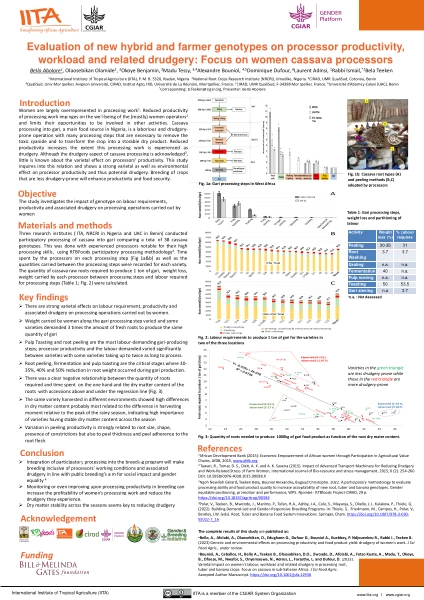Evaluation of new hybrid and farmer genotypes on processor productivity, workload and related drudgery: Focus on women cassava processors
Abstract
Processing enhances shelf life of bulky and perishable roots, tubers and bananas. This study highlights, for the first time, the impact of genotypes on labor requirements, productivity, and the associated drudgery in processing operations primarily carried out by women processors. Participatory processing and processing diagnostics were conducted with experienced cassava processors in West Africa. Peeling, soaking/grinding/fermentation, dewatering, sieving, and toasting steps were evaluated on a range of newly bred genotypes and traditional landraces with three processors processing all the genotypes. Furthermore, processors used pairwise ranking to evaluate the quality at each stage: from fresh roots to the dry product gari and the final dough like product eba. Genotypes influenced food product yield and productivity. Results show that, depending on the genotypes used, women’s required labor can be more than doubled and even the sum of the weights transported along the process can be up to four times higher for the same quantity of gari. Cassava root shape and size, ease of peeling and dry matter content impact food product yield. Root peeling and pulp toasting were the most labor demanding. Processor effects on results were minimal, indicating full mastery of the processing. Several genotypes showed relatively high field yield, processor productivity and product yield combined with good food product quality, indicating the possibility to optimize. Productivity, related drudgery and food quality traits are key factors to consider in breeding for better acceptance of new genotypes by actors in the value-addition chain and contribute to improved livelihoods for women processors.

